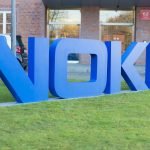
Kubernetes (K8s) is the key component in the data centres modernising and adopting cloud-native development architecture to deliver applications using containers. Capabilities such as orchestrating VMs and containers together make Kubernetes the go-to platform for modern application infrastructure adopters. Telecom operators are also using Kubernetes to orchestrate their applications in a distributed environment involving many edge nodes.
But due to the large scale of telco networks – which includes disparate cloud systems – Kubernetes adoption requires different architectures for different use cases. Specifically, if we look at a use case where Kubernetes is used to orchestrate edge workloads, there are various frameworks and public cloud managed Kubernetes solutions are available that offer different benefits and gives telecom operator choices to select the best fit. In recent Kubernetes on Edge Day sessions at KubeCon Europe 2021, many new use cases of Kubernetes for the edge have been discussed along with a showcase of cross-platform integration that may help enterprises adopting 5G edge and telecom operators to scale it to a high level.
Here is a high-level overview of some of the key sessions.
The edge concept
There are different concepts of edge that have been discussed so far by different communities and technology solution experts. But when Kubernetes is coming into infrastructure, IT operators need to clearly understand the key pillars on which the Kubernetes deployment will seamlessly deliver the low latency performance in telco or private 5G use cases.
First, there should be a strong implementation of Kubernetes management at scale. Second, operators need to choose the lightweight K8s for edge solution which is preferably certified by the Cloud Native Computing Foundation (CNCF). And third, there should have a lightweight OS deployed at every node from cloud to the far edge.
Microsoft’s Akri project: Microsoft’s Akri project is an innovation that will surely break into multiple Kubernetes-based edge implementations. It discovers and monitors far edge devices of brownfield devices that cannot have own compute – can be a part of Kubernetes cluster. Akri platform will let these devices exposed to the Kubernetes cluster.
AI/ML with TensorFlow: TensorFlow is a machine learning platform that takes inputs to generate insights. It can be deployed on cloud, on-premises, or edge nodes where ML operations need to perform. In one of the sessions, it has been shown that Kubernetes clusters deployed in the cloud and edge can host analytics tools set (Prometheus, EnMasse/MQQT, Apache Camel, AlertManager, Jupyter, etc) to process ML request with the lowest latency.
Architectures for Kubernetes on the edge: While deploying Kubernetes for an edge, there are many architecture choices that are varied per use case. And each architecture poses new challenges. But the bottom line is – there is no one-size-fits-all solution as various workloads have different requirements and IT teams are focusing on the connection between network nodes. So, the overall architecture needs to evolve centralized and distributed control planes.
Robotics: Kubernetes has also been implemented in robotics. Sony engineers have showcased how the K8s cluster systems can be for distributed system integration of robots and perform specific tasks collaboratively.
Laser-based manufacturing: Another interesting use case discussed by Moritz Kröger who is a researcher at RWTH Chair for laser technology leveraged a Kubernetes based distributed system. Kubernetes features like automation configuration management and flexibility in moving workloads in clusters give operational benefits to laser manufacturing machines.
OpenYurt + EdgeXFoundry: OpenYurt is yet another open-source framework that extends the orchestration features of upstream Kubernetes to the edge. It is showcased that it can integrate with EdgeXFoundtry in 5G IoT edge use cases where EdgeXFoundtry is used to manage the IoT devices and OpenYurt is used to handle server environments using OpenYurt plugins set.
Using GitOps: Kubernetes supports the cloud-native application orchestration as well as declarative orchestration. It is possible to apply the GitOps approach to achieve the Zero Touch Provisioning at multiple edges from the central data centre.
Hong Kong-Zhuhai-Macao Bridge: Another use case discussed was how Kubernetes is implemented in edge infrastructure for managing applications that are managing sensors at Hong Kong-Zhuhai-Macao Bridge. The use case is unique as it focuses on how to define the sensor devices on the bridge as CRD in Kubernetes, how to associate each device with the CI/CD, and how to manage and operate the Applications deployed on edge nodes.
Node feature discovery: There are a vast number of end devices that can be part of thousands of edge nodes connected to data centres. Similar to the Akri project, the Node Feature Discovery (NFD) add-on can be used to detect and push into Kubernetes clusters to orchestrate with edge server as well as cloud systems.
Kuiper and KubeEdge: EMQ’s Kuiper is the open-source data analytics/streaming software that runs on edge devices that have low resource requirements. It can integrate with KubeEdge where we get a combined solution that leverage KubeEdge’s application orchestration capabilities and with streaming analytics. The combined solution delivers low latency, saving cost on bandwidth, ease in implementing business logic and operators can manage and deploy Kuiper software applications from the cloud.
Editor’s note: Calsoft is conducting a webinar on the topic, ‘Demystifying Kubernetes for Edge’, on May 21, 2021. This webinar will touch upon the importance of Kubernetes for simplifying Edge deployment, along with the most sought-after solutions to real Edge implementation challenges. Get yourself registered here.
Photo by Joseph Barrientos on Unsplash

Want to find out more about topics like this from industry thought leaders? The Cloud Transformation Congress, taking place on 13 July 2021, is a virtual event and conference focusing on how to enable digital transformation with the power of cloud.






